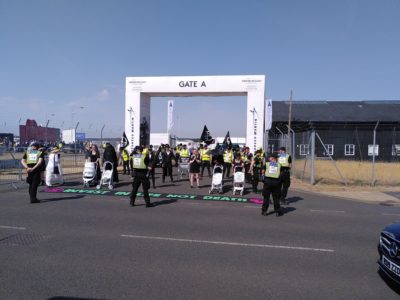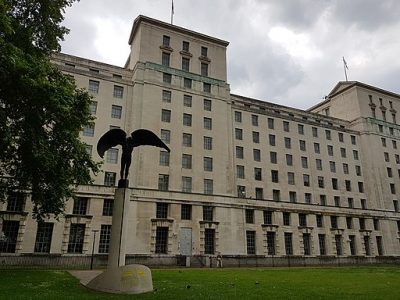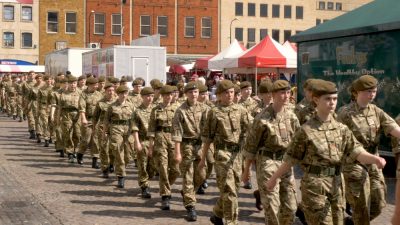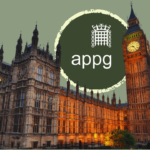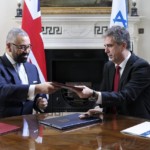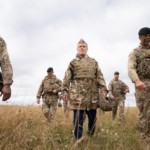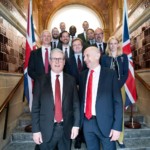Militarising Education
This article was originally published on openDemocracy
The incursion of the military into the British education system will mean that alternatives to war and peaceful ways of resolving conflict will be more difficult for young people to explore. In the long term we will all pay a heavy price.
The UK government is on a drive to integrate ‘military ethos and skills’ into the structure of education, echoing developments in the US and founded on an ideology that says that everything military is good.
According to an unpublished 2007 report by the Ministry of Defence (MoD), the UK military already has substantial involvement in education, visiting thousands of schools and colleges each year and having contact with a minimum of around 900,000 children aged 8 -18. Figures obtained link under the Freedom of Information Act suggest that in many areas most secondary level state schools and colleges are being visited, often numerous times. The three aims of this involvement were outlined in the Youth Engagement Review 2011: recruitment, to raise awareness of the armed forces “in order to ensure the continued support of the population” and to encourage personal and social development. The first two are Defence outcomes, the third chimes neatly with the Government’s agenda in other areas in which military input into young people’s lives is being seen as a solution to wider issues of social dysfunction.
A more vivid interpretation of the agenda behind the military’s ‘engagement’ with youngsters was given by the head of army recruitment in 2007, “Our new model is about raising awareness, and that takes a ten-year span. It starts with a seven-year-old boy seeing a parachutist at an air show and thinking, ‘That looks great.’ From then the army is trying to build interest by drip, drip, drip.”
Ready access to hundreds of thousands of school children each year provides the contact that the forces need to win over young hearts and minds to military ideals and to engage them in pre-recruitment activities for those who will eventually enlist.
However, in addition to the careers talks and presentations, free curricular resources, displays, alternative curricular activities, visits to bases, mentoring individuals and cadets forces, there is currently an ideological push, which has gained momentum this year, to integrate military attitudes into the structure of national education policy. The Department for Education’s (DfE) ‘military skills and ethos programme’ encompasses a number of schemes including expanded cadet provision within state schools, the Troops to Teachers scheme and alternative provision for pupils at risk of becoming disengaged, including the Military to Mentors and Challenger Troop, a full time uniformed programme for 10-16 year olds. The Government chose Armed Forces Day this year to announce their aim of creating 100 new cadet units in English state schools.
‘Military ethos’ – who benefits?
The DfE state that their objective of bringing military ethos into education “to help raise standards and tackle issues such as behaviour” is based on positive values associated with the military, “loyalty, resilience, courage and teamwork, to name but a few.” However, they do not provide a rounded examination of ‘military ethos’ or why a military framework is an appropriate one in which to develop these values within education. The military operates in an environment of conflict and its hierarchical structure, demand for obedience, use of force and lack of space for critical thinking do not seem appropriate in an education context.
In order to accommodate the modern expectations of young people, the last decade has seen military life increasingly represented as providing them with development and career opportunities. While the concept of ‘self-development powered by the army’ fails to give a rounded picture of military experience, it does provide a strong momentum behind the offering of military values and skills as the solution to individual and community dysfunction and lack of hope. Since the 2011 riots, the Centre for Policy Studies have proposed ‘zero-tolerance’ free schools run entirely by ex-military with ‘no moral relativism’ and the ‘encouragement of competitiveness’ amongst its most important principles. Another think-tank, ResPublica, have proposed ‘Military Academies‘ to ‘rescue the young’, ‘generate hope and purpose’ and keep them out of trouble.
The military academies proposal explicitly states two further outcomes: it would serve to provide employment opportunities for ex-service personnel and it would increase recruitment capacity, especially to the reserve forces which are planned to play a larger role in the future. So, whose interests are actually being served by embedding military ethos in education? Whether or not politicians can believably argue that the policy is located in the needs of pupils and students, it seems that other agendas are evidently at play; some young people, living in certain communities could soon have little choice but to shape up to military expectations, fall in line and become part of a military-ready pool of potential recruits.
A recent report by Child Soldiers International, which argues for the military recruitment age to rise to 18, suggests that, despite MoD claims, the quality of education for minors within the two main military training institutions does not compare at all well to conventional education. One of the issues identified is that a minority of staff at these institutions are qualified teachers. Will basic educational attainment at military academies and free schools, which would be able to employ teachers who have not formally qualified, similarly suffer?
In Globalisation and Militarism, Cynthia Enloe states that, “To become militarized is to adopt militaristic values and priorities as one’s own, to see military solutions as particularly effective, to see the world as a dangerous place best approached with militaristic attitudes.” With such militaristic attitudes gaining ground in UK education, and a wider uncertainty around the future of progressive citizenship within the national curriculum, creative and peaceful forms of conflict resolution will find it harder to complete with military approaches and solutions, and may be silenced altogether. Educational materials currently provided by the forces to schools almost exclusively approach issues of conflict, human rights or justice through a military lens and rarely pursue a critical perspective of military action or armed forces life.
How did we get here?
This progress of militaristic attitudes is not just happening at schools of course. Since the 2008 Report of Inquiry into National Recognition of the Armed Forces there has been an observable rise in the media representation of all soldiers, or ‘our boys’ (women make up less than 10% of UK Regular forces and media usually focuses on men), as heroes and in the level of uncritical celebration of the armed forces. The annual Armed Forces Day, the Armed Forces Community Covenant – “a voluntary statement of mutual support between a civilian community and its local Armed Forces Community” – and the publicity coup resulting from the British military’s involvement in the Olympics have been preparing the ground for a growing acceptance of the military as solution to wider social problems.
Looking across to the US provides an indication of where this public policy could be heading. Research by Catherine Lutz on the expansion of the Junior Research Officer Training Corps in US schools during the 1990s, to “create favourable attitudes and impressions toward the Services and toward careers in the Armed Forces”, shows that the programme did not increase safety in schools but did promote authoritarian values, rote learning methods and drill in favour of democratic values and critical thinking. Since then, the No Child Left Behind Act has given the military legal access to schools and contact data for each student. It is legislation which lays bare the recruitment agenda behind the military’s involvement in education and which has fuelled a vibrant movement against the militarisation of young people.
Galaviz et al.’s study of the Militarization and Privatization of Public Schools in the US identifies the development of the Charter School Movement as important to the more recent spread of military academies within public education. This is reflected in the British government’s turn towards academies and free schools as a mechanism for the delivery of military values into school life. The deregulation of education within this sector raises further concerns about accountability and the nature of real choice for parents when schools that receive the highest level of resources are those that conform to current government ideology.
Schools and the ‘duty of care’
The reframing of the military as an uncontroversial modern institution, embracing diversity and providing a context in which the individual can excel as professional, as well as a hero, has quietened dissent around its involvement in education. The concerns of teaching unions in England and Wales and Scotland around one-sided army materials and recruitment-orientated presentations within schools have abated. Within this context it is easy to see how over 100 schools this year had a ‘Camo Day‘, a non-uniform fundraiser for veterans charities, providing a visual celebration of military apparel.
The research report Informed Choice? Armed forces recruitment practice in the UK shows that information on army life as presented by the military is often biased with the effect of glamorising and sanitising warfare. Young people often join up without sufficient knowledge and understanding to make an informed choice. Yet it is within the school’s duty of care to present a balanced view of life in the armed forces. The National Union of Teachers 2008 resolution was based on the duty that a school has under the Education Act 1996 ‘to secure balanced treatment of political issues’. Ethical issues, that each recruit should consider around the justification of military action, and legal obligations around enlisting, as well as the risks of death or serious injury, PTSD and other mental health and wellbeing issues, must all be part of such a balanced treatment. Embedding military ethos within the structure of education is likely to further reduce the space and input needed for such critical awareness.
We also look to schools to play a significant role in giving the decision-makers of tomorrow the tools and knowledge they need to create a more peaceful society. Militarising education will mean that alternatives to war will be more difficult for young people to explore. Not only will they be less willing and able to voice their concerns and questions but the very possibility of peaceful ways of resolving conflict will become more distant. In the long term we will all pay a heavy price for buying into military solutions within education as the interests of the armed forces gain a stronger foothold in society, as the idea of service becomes equated with force and as values which have been formulated by the military become the principles to be measured by.
There needs to be a much greater public response to both the government-led ideology around ‘military ethos and skills’ and decisions at the level of individual schools to engage with the military. There is still time for military academies and free schools to be rendered unacceptable before they take hold. The military must be recognised for what it is – an outside interest with its own agenda and at odds with the aims of education and the needs of students. We must each question every incursion in the step by step process of militarisation within education and make this into an issue of controversy and debate.
See more: military in schools/colleges, military ethos, reserves
Like what you read?
> Sign up for our newsletter or blog notifications
> Support our work – from just £2 a month

